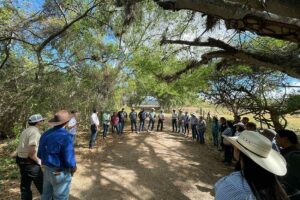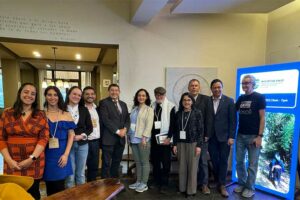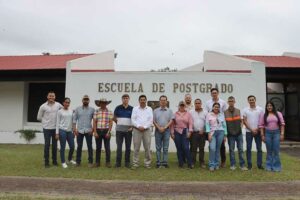SINAC Publication in Costa Rica Highlights CATIE Student's Contributions to the Study of Bee Communities
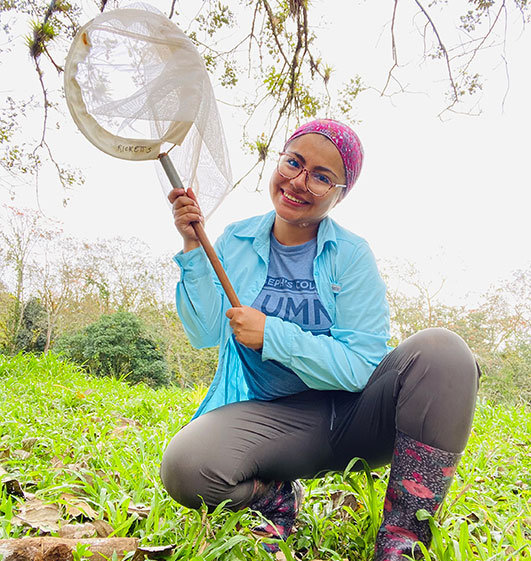
- The study addresses a priority topic of SINAC's 2014-2024 National Research Strategy, focusing on the interaction between human activities and ecosystems and the services they provide.
The results of the master's thesis research by Ecuadorian student María Fernanda Guanga Guillén, titled “Evaluation of Bee Communities in the Main Land Uses of CATIE’s Commercial Farm,” were recently published in the Newsletter of the National Research Program (PNI) of Costa Rica’s National System of Conservation Areas (SINAC).
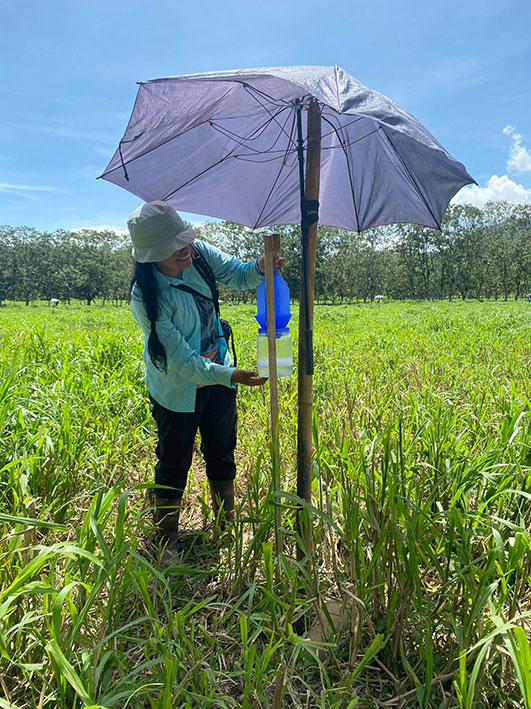
Guanga Guillén's research addresses a priority topic of SINAC’s 2014-2024 National Research Strategy, focusing on the interaction between human activities and ecosystems and the services they provide. Specifically, the study evaluated the abundance, diversity, and composition of bee communities in five different land uses within CATIE’s commercial farm and its buffer zone.
María Fernanda Guanga Guillén, originally from Ecuador, pursued a scientific master’s degree in Tropical Forest Management and Biodiversity Conservation at CATIE from 2022 to 2023.
“Conducting research on Costa Rican bees meant a lot for my career as a researcher, as it allowed me to contribute scientific knowledge about the country's bee diversity, which welcomed me to pursue my master’s. Furthermore, it has enabled me to apply that knowledge in my country, Ecuador, to promote research on pollinators and their importance in our ecosystems,” she said.
This study helps close significant information gaps regarding the conservation status of bees in agricultural landscapes and highlights the relevance of academic work conducted at CATIE in generating knowledge to inform national conservation strategies.
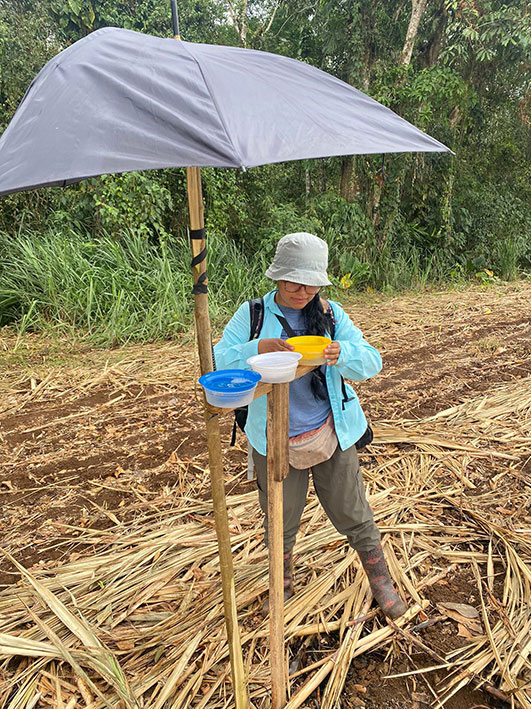
Key Findings
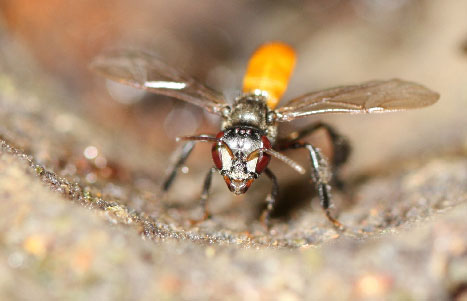
The research revealed that CATIE’s farm, located in the Central Volcanic Range-Talamanca Biological Corridor (CBVCT), hosts significant bee diversity. A total of 1,857 individuals from 57 species were collected, distributed among five families: Apidae, Halictidae, Colletidae, Megachilidae, and Andrenidae. The results indicated that forested areas had the highest abundance of individuals, while transitional land uses such as forest-sugarcane exhibited significant richness and diversity.
These findings underscore that heterogeneous agricultural landscapes, such as those in CATIE’s farm and the CBVCT, can play a key role in conserving diverse bee communities, which in turn contributes to preserving the ecosystem service of pollination. Additionally, the association of species’ functional traits with their presence in different land uses demonstrates that land-use changes impact species differently.
Support and Projection
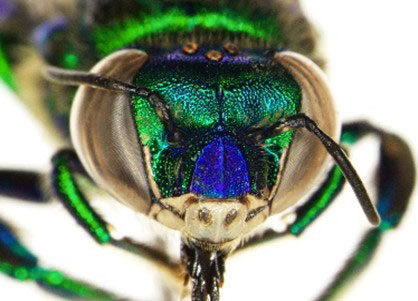
María Fernanda pursued her master’s degree with a scholarship granted by the Canadian government and the “RESTAURacción Latin American Model Forest Network-Costa Rica” project. Her research was supported by several CATIE units, including contributions from Alejandra Martínez-Salinas, Diego Delgado, and Adina Chain from the Forests and Biodiversity in Productive Landscapes Unit; Sergio Vílchez Mendoza from the Biostatistics Unit and the Latin American Chair of Ecology in Natural Forest Management; as well as external organizations such as Bee the Change, the Gund Institute for Environment at the University of Vermont, and Mario Gallardo from the Tropical Apicultural Research Center (CINAT) at the National University of Costa Rica.
She is currently working on a manuscript to publish her findings in a peer-reviewed journal to broaden the impact of her research.
National Research Program (PNI) Newsletter
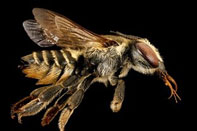
The article published in SINAC’s newsletter highlights how the transformation of natural landscapes into agricultural ones impacts pollinator communities, which are essential for food security and biodiversity conservation. The research emphasized the importance of forests and land uses such as sugarcane adjacent to forests, which can provide habitat and resources for certain bee species.
By combining active and passive collection methodologies, unique patterns in the composition and diversity of bee communities were identified, underscoring the importance of integrating different land-use types into management and conservation strategies. Finally, the study suggests that landscape heterogeneity is key to maintaining the dynamics and distributions of bee communities, which are critical for sustaining crop productivity and food security.
Interested individuals can access a copy of her thesis through the following link: https://repositorio.catie.ac.cr/handle/11554/12346
More information:
Alejandra Martínez-Salinas
Coordinator
Forests and Biodiversity in Productive Landscapes Unit
CATIE
amartinez@catie.ac.cr
María Fernanda Guanga Guillén
Researcher
Máster en Manejo y Conservación de Bosques Tropicales y Biodiversidad
maria.guanga@catie.ac.cr
Written by:
Esteban Rodríguez Zamora
Communicator
Information Technology and Communication
CATIE
esteban.rodriguez@catie.ac.cr

